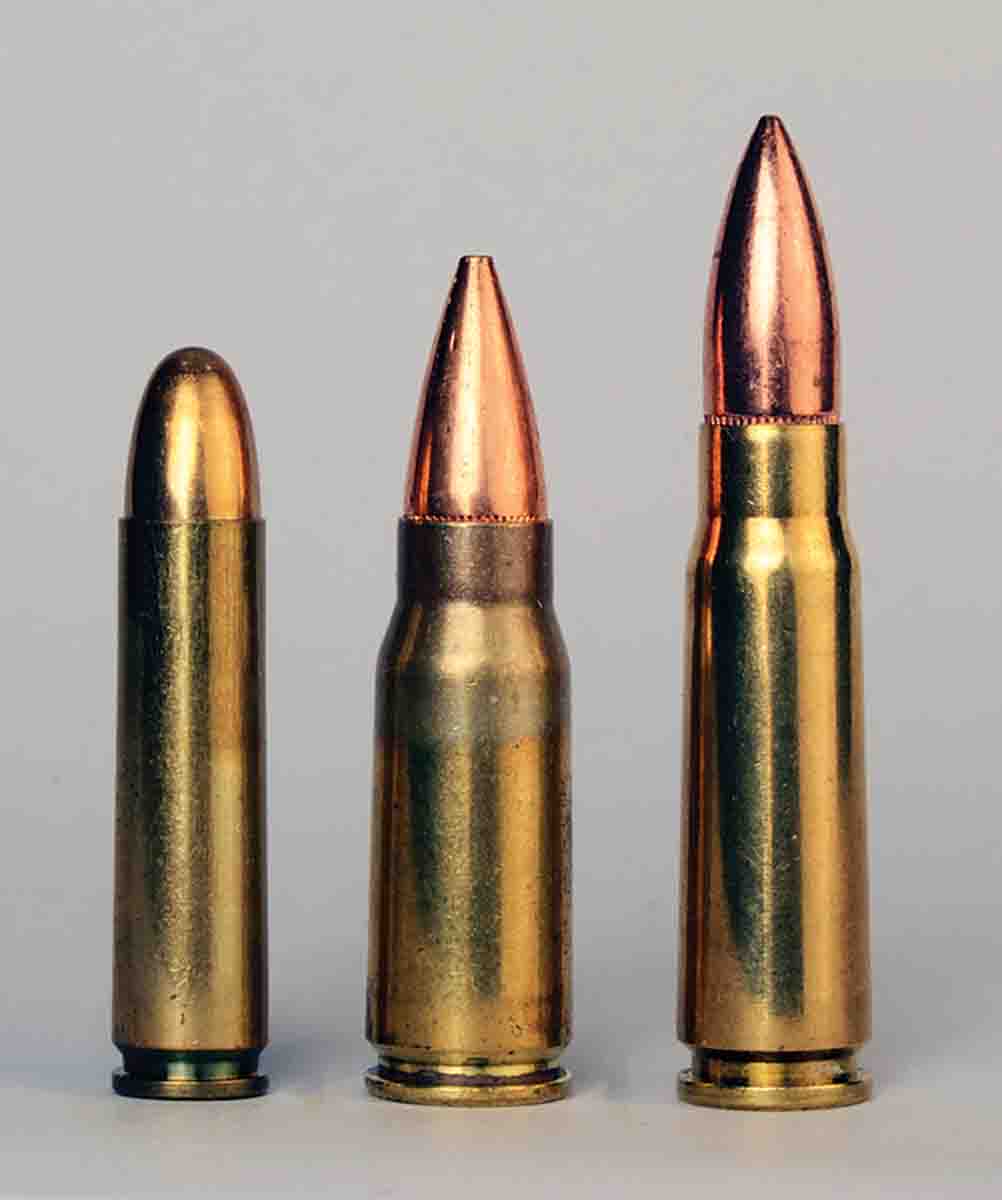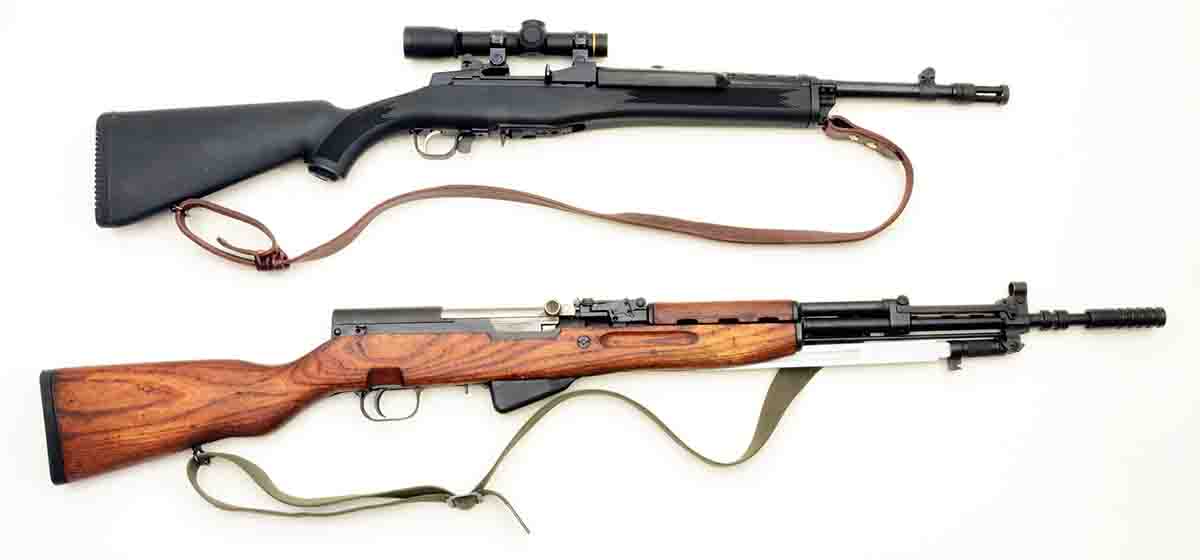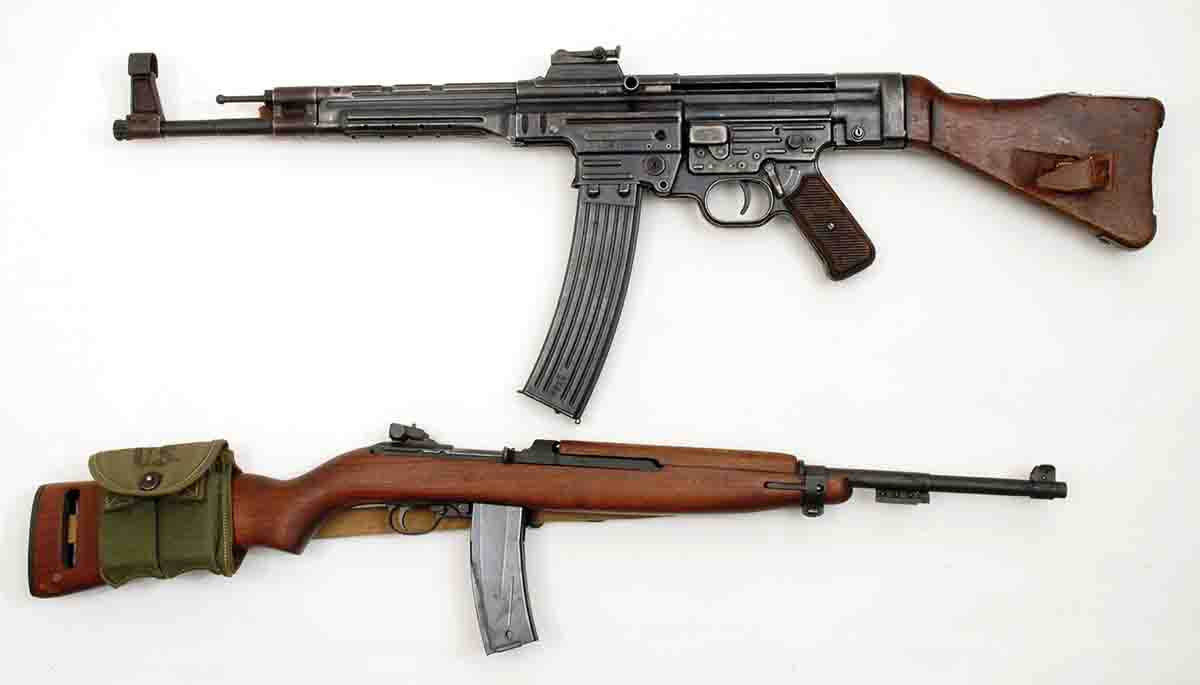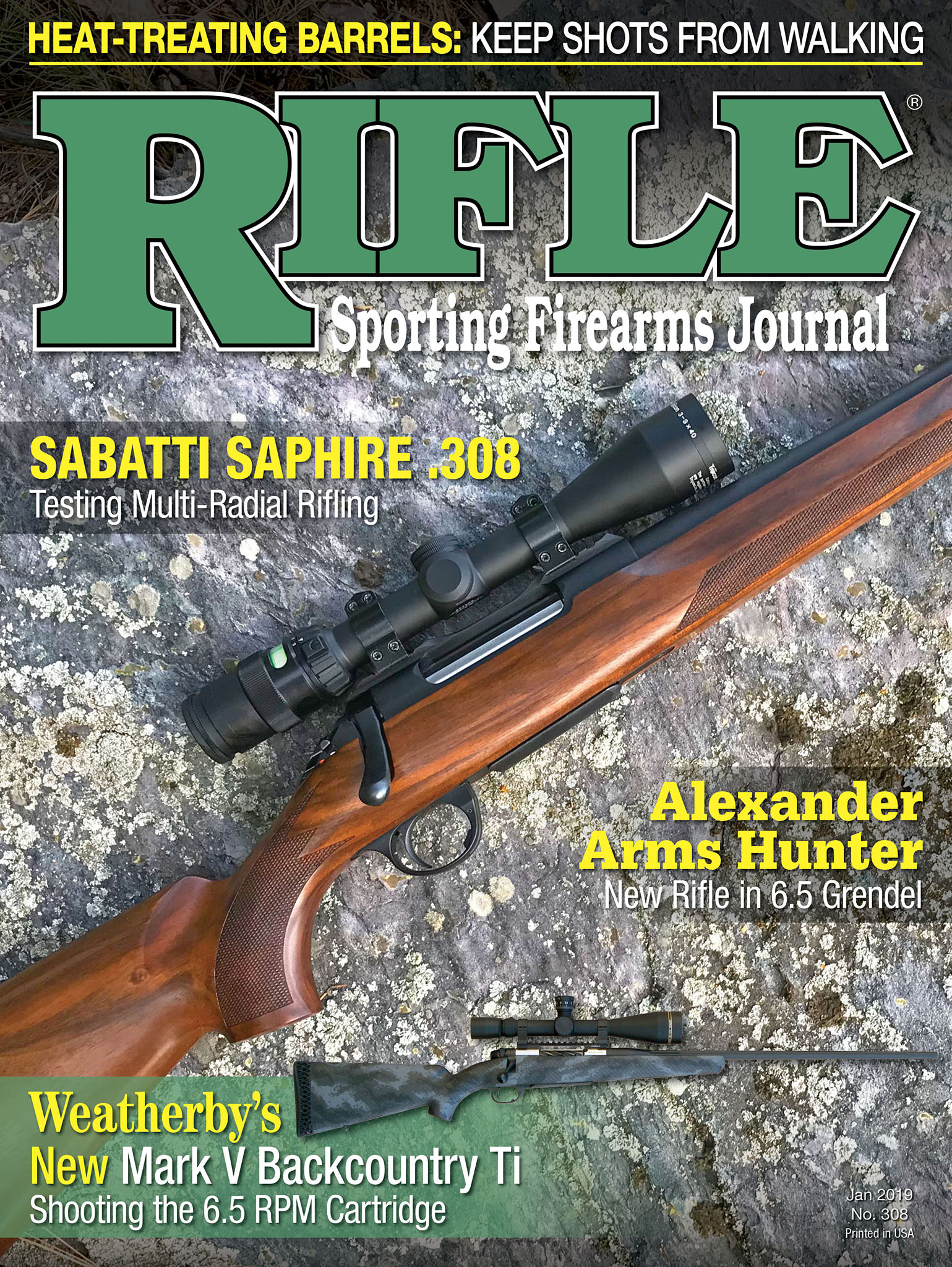Down Range
Three-Cartridge Conundrum
column By: Mike Venturino | March, 20

Why is that a conundrum? The weak sister – .30 Carbine – was rated with a 110-grain FMJ bullet at 1,980s fps muzzle velocity. Germany’s 7.92x33mm Kurz’s ballistics included a 125-grain FMJ at 2,300 fps and the Soviet’s 7.62x39mm (M43 Ball) had 123-grain FMJs at 2,330 fps. Does 13 to 15 grains of bullet weight and about 300 fps velocity make that big a of difference?
Germany considered its round combat effective to 400 meters. Soviet and satellite nations’ AK 47s and SKSs were certainly as capable on battlefields. Conversely, stories abound from World War II and the Korean War about M1 and M2 .30 Carbines failing to stop enemy soldiers, even with multiple hits at close range. If any complaints exist about Germany’s or the Soviet Union’s abbreviated cartridges, I’ve never encountered them. And for sure, the Soviet 7.62x39mm has to be the most used military cartridge worldwide now, nearly seven decades after its appearance.
Perhaps one factor in this conundrum is how different military organizations developed the cartridges discussed here. The U.S. Army essentially desired a “pistol cartridge,” albeit a “magnum” one in practical fact. Case length for the .30 Carbine was set at 1.29 inches, which was same as the .357 Magnum, the only magnum in existence in 1940. The .30 Carbine’s 110-grain roundnose bullet was shaped similarly to most pistol and revolver factory loaded bullets of that era. Compare its basic RN shape to .38 Special or .38 Super of that era.
The U.S. Army believed that Model 1911 .45s should be replaced on the battlefield because sufficiently training troops with them was difficult. They were at most a 50-yard weapon, but only in the hands of well trained troops. The concept for M1 .30 Carbines was that with mild recoil and being shoulder fired, even a poorly trained soldier could hit a man size target at 50 yards and well beyond. Never intended for offensive use, instead they were issued for troops’ self-defense whose main jobs were not fighting with shoulder fired weapons. This included mortar and machine gun crews, communications specialists, officers and NCOs or anyone who might have been issued a Model 1911 .45 pistol prior to the M1 .30 Carbine’s appearance. Ironically, M1 or M2 Carbines never did replace handguns, as Model 1911A1s served for decades after the .30 Carbines were declared obsolete.

Now look at Germany’s 7.92x33mm Kurz or the Soviet 7.62x39mm. Those cartridges were loaded with FMJ spitzer-shaped bullets obviously meant for reaching out farther than the .30 Carbine’s FMJ-RN. Most certainly, the weapons designed by Germany and the Soviets were intended for main battle rifles. For example, look at the moniker given the select fire MP44, or Stg44. It was Sturmgewehr, which translates literally to storm rifle. “Assault rifle” is merely a different version of translation. The MP44 (which I have) and Stg44 were the same except for different name stamps. They had 16-inch barrels and were made of steel with wood buttstocks. If there was ever a magazine made for them with less than 30-round capacity, I’ve never encountered even photos of one.
Germany actually got some early versions of those weapons in the hands of their Wehrmacht troops on the Eastern Front in 1942. As so often happened, all sorts of ordnance was captured from each side by their opponents. At the time the main battle rifle cartridge of the Red Army, the 7.62x54mmR, dated from 1891. It used a rimmed case 2.11 inches long with bullets weighing from 149 to 189 grains. The Soviet Union never balked at using another nation’s ideas and claiming them as its own. It saw merit in Germany’s assault rifle cartridge. Considering that combat between the immense forces battling on the Eastern Front was using up billions of rounds of small arms ammunition, there was practicality in saving tons of strategic materials with shorter cartridge cases and lighter bullets. Hence the year 1943 is quoted as the birth year of the 7.62x39mm.

For some reason, however, not until after World War II did the Soviets began issuing rifles so chambered. First was the semiauto SKS, which also became a staple of China and Eastern European armies under control of the Soviet Union. Soon thereafter the famous select-fire AK 47 was unveiled. Respectively, these two rifles had 20.5-inch and 16.30-inch barrels and weighed 8.5 and 9.5 pounds with magazine capacities of 10 and 30 rounds.
So much for history, now back to the conundrum. Is the .30 Carbine really a “weak sister” to Germany’s and the Soviet Union’s cartridge developments? I’d say only with military type FMJ bullets. With JSPs and JHPs it’s fairly devastating on small animals to about 100 yards. The only hang up with the .30 Carbine in regard to sportsmen is that the vast bulk of M1 Carbines, originals and modern versions, cannot readily be scoped. As for 7.92x33mm Kurz, hunting is a non-issue in that the only firearms made for it are select-fire, very expensive collector’s items weighing 11 pounds.
I’d just about bet money that no one in America has shot a deer with a Sturmgewehr. The same is likely true of people shooting deer with actual AK 47s (as opposed to the semiauto-only variants available here). I do know a couple of guys who have shot deer with SKSs.
Finally, I’d say that Ruger made a wise move about 30 years ago. It altered the hot selling Mini-14 .223 Remington to accept 7.62x39mm and called it the Mini Thirty. A few years back, already owning an AR-15 .223, I decided to try a Mini Thirty. The “tactical” version was chosen with a synthetic stock and 16.12-inch barrel, and a 3x Leupold was mounted on it. It actually shoots groups in the 2 MOA range with good loads. Softpoint hunting ammunition is commonly available. The 7.62x39mm, especially when combined with a scoped rifle or carbine, definitely has a sporting future.


